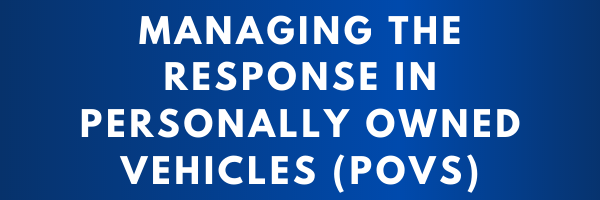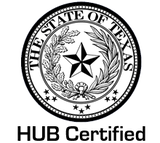|
shop.vfis.com/By Scott Harkins, CSP, CPCU, ARM, Senior Vice President Risk Control Services (originally posted on www.vfis.com)
Most volunteer emergency service departments rely heavily on the ability of their members to respond to calls, either to the scene or the station, in their personal vehicles. While this is essential to the organization’s ability to react to emergencies in a timely manner, there are also inherent risks. The most significant risk associated with allowing volunteers to respond in their personal vehicles is that they may operate them as if they are emergency vehicles or disobey motor vehicle laws. All too often, this leads to accidents. Motor vehicle laws While motor vehicle laws vary from state to state, all states address the issue of response in personally owned vehicles similarly: personal vehicles are not emergency vehicles and are not permitted the same, if any, exemptions to motor vehicle laws. For example, while responding, licensed emergency vehicles may be allowed to exceed the posted speed limit, move against the normal flow of traffic and proceed through a negative intersection control device, however, volunteers driving POVs are required to obey applicable state motor vehicle code. When asked why they volunteer, most members talk about providing a service to their community or helping their neighbors. Not following motor vehicle laws while operating a motor vehicle does not provide a service to the community or help your neighbors. In fact, it puts your neighbors at risk. Some motor vehicle codes address the use of “courtesy lights.” These lights are a visual request asking other drivers to allow you to pass them upon your approach. They are not a demand for right-of-way, nor do they permit the driver to illegally pass or speed up to overtake any vehicle. Motor vehicle codes do vary, and an understanding of your state laws is important in determining how to manage this risk. Alternative solution The response of your members in their POVs helps form the perception that your community has of your organization. Don’t you want that perception to be positive? Your organization may wish to reduce or eliminate the risks associated with members responding in their personal vehicles by looking at alternative ways of getting personnel to the scene. For example, the creation and use of duty crews (members staffing predetermined shifts) would eliminate the need to have large numbers of volunteers responding to every call. A duty crew could staff a full first unit response to handle most calls. This would minimize the amount and the number of times volunteers are on the road in POVs. Standard operating procedures If your members are going to continue to respond to calls in personal vehicles, help minimize the risk of death or injury by developing and enforcing standard operating procedures (SOPs). These procedures should include, but not be limited to, the following: Volunteers responding in personal vehicles must obey their state motor vehicle code with respect to courtesy light and siren privileges. SOPs should not be more restrictive than applicable motor vehicle codes. Volunteers are not to use courtesy lights as a license to operate their personal vehicles as if they are emergency vehicles. Have the department chief approve all courtesy lights and issue a written permit. The permit could include the “rules of the road” that apply. Volunteers responding in personal vehicles should never exceed the posted speed limit. Volunteers responding in personal vehicles are to come to a complete stop at all stop signs and red traffic signals, and must wait for normal right-of-way before proceeding. Procedures for at-the-scene parking/staging should be included in SOPs. Volunteers must have personal auto liability insurance with appropriate liability limits. This will help protect not only the volunteer but also your organization. Once they are developed, include SOPs in new-member orientation and driver training sessions. After every member receives a written copy of your SOPs, have them sign off that they received them and understand them. In addition, develop written enforcement and progressive discipline guidelines for any member who violates procedures. When volunteers respond to calls, they need to understand that, first and foremost, they must arrive at the emergency scene or the station safely in order to be of any help to the public. Leaders must set the example by responding appropriately because members notice what their leaders do and follow that lead. Need help? VFIS has a training program, Privately-Owned Vehicle Operations – Answering the Call Safely that can be used as part of your new-member orientation and/or ongoing training program. Visit shop.vfis.com.
0 Comments
Leave a Reply. |
|
|
© 2024 WinStar Insurance Group
13625 Ronald W. Reagan Blvd. Building 3, Suite 100 Cedar Park, Texas 78613 (512) 448-9928 [email protected] |
Home | About Us | Insurance | Training | Life & Health | Resources | Claims | News | Contact Us | Mission & Values | Privacy Statement
|
IMPORTANT NOTE: This Web site provides only a simplified description of coverages and is not a statement of contract. Coverage may not apply in all states. For complete details of coverages, conditions, limits and losses not covered, be sure to read the policy, including all endorsements, or prospectus, if applicable. Coverage CANNOT be bound, amended, or altered by leaving a message on, or relying upon, information in this Website or through E-Mail.
Licensed & doing business in the following states only: Texas, Oklahoma, New Mexico, Arkansas, & Mississippi
Licensed & doing business in the following states only: Texas, Oklahoma, New Mexico, Arkansas, & Mississippi





